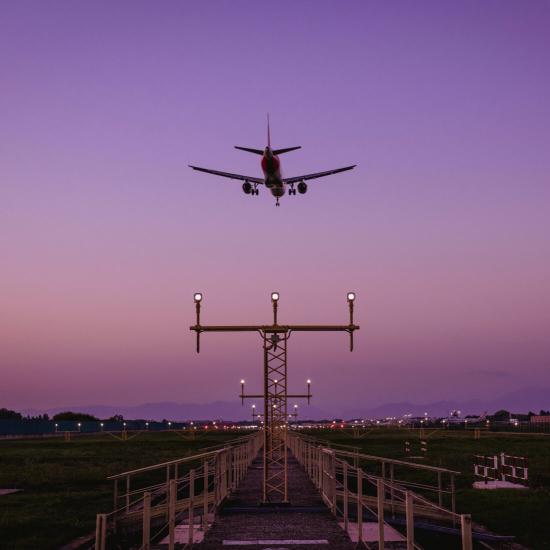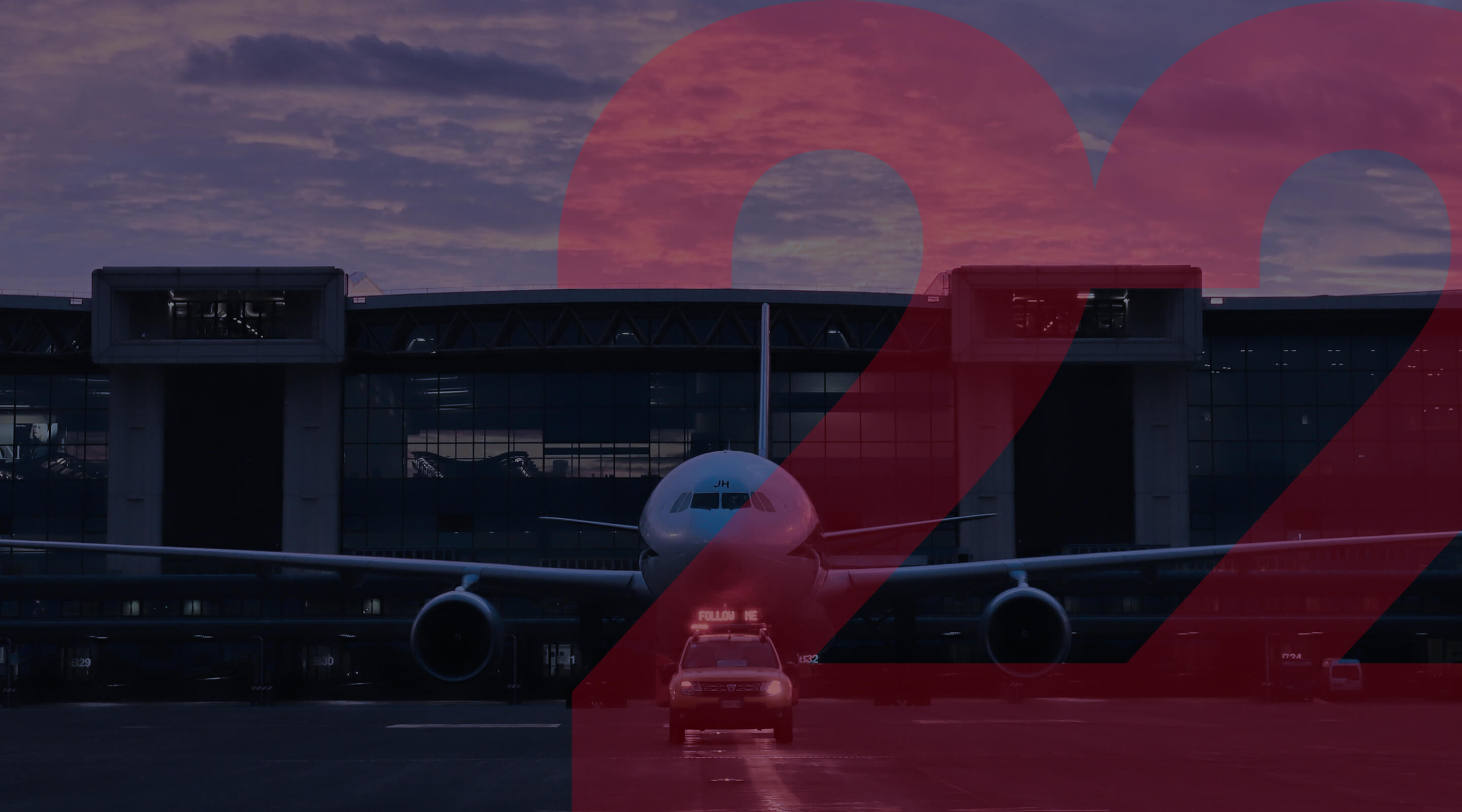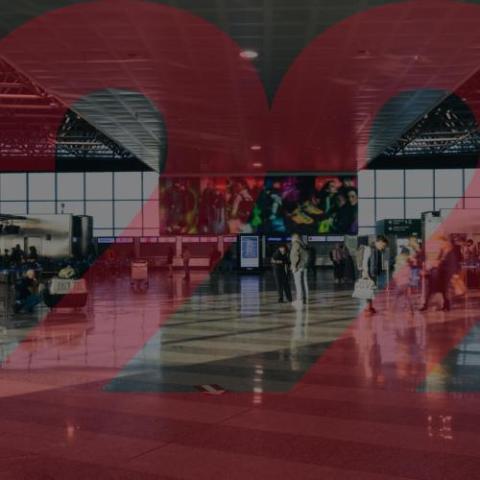
Letter to Stakeholders
When everything seems to be going against you, remember that the airplane takes off against the wind, not with it
Henry Ford
Our journey towards the sustainable transition never stopped in 2022. If anything, it accelerated and, in many cases, allowed us to finish among the most dynamic players in our sector.
The significant recovery of traffic recorded in the period meant that we could address our agenda of ESG commitments and investment programs with greater serenity, which was established with great determination and effort during the months in which the pandemic continued to generate uncertainties and discourage any planning ambitions.
The turning point came mid-year as passenger numbers rapidly rose across Europe, putting the operational stability and quality of passenger services to the test in many continental airports, especially given the difficulty of processes to reinstate the workforce, which had been greatly reduced as a result of the repeated lockdowns.
This was not the case for the Milan airports, where there were limited inconveniences during operational peaks and where passenger assistance improved in many aspects during the year, as demonstrated by the ASQ (Airport Service Quality) indicators, which placed Linate and Malpensa well above their historic average in 2022.
This result was also achieved thanks to the introduction of innovations such as the Smart Security system, based on latest generation technology that allows passengers to go through security without having to remove liquids and electronic devices from their hand luggage.
In 2021, Linate was the first airport in the world to trial this new equipment, which halves the time it takes passengers to pass through the security gates while drastically improving the effectiveness of checks. Malpensa followed suit in 2022.
We were also highly proactive with regard to sustainable mobility. We introduced the first electric passenger shuttles at Malpensa back in 2021, which were then doubled in 2022.
In the meantime, we have started renewing the fleet of operating vehicles at both airports, replacing those that rely on endothermic fuel supply with low-emission vehicles.
Between 2023 and 2025 we will replace the entire corporate fleet with electric and hybrid vehicles and make a total of over 100 charging stations available at our airports.
Still on the subject of mobility – in terms of transfers to and from our airports – at Linate we activated Milan’s first super-fast charging station, one of the largest electric vehicle charging stations at an international airport (which allows 10 vehicles to charge simultaneously in 15/20 minutes), powered by 100% renewable energy. The same type of infrastructure will soon be available at Malpensa too.
These are just some of the initiatives envisaged in the detailed and ambitious Decarbonization Plan launched in 2022, which will lead us to achieve the commitment – made when we obtained the highest level of Airport Carbon Accreditation (ACA), the voluntary CO2 emissions reduction programme promoted by the association of European airports – to reach net zero emissions at both our airports by 2030.
In keeping with this Plan, we completed the sale of the company SEA Energia – which supplied electric and thermal energy to our airports through the operation of two methane-fueled cogeneration plants – in order to reformulate our future energy supply with solutions that progressively rely on renewable sources.
We are also taking action to cut our energy requirements, having approved an important energy consumption efficiency plan which will involve the investment of around €15 million over the next three years, thanks to which we will structurally reduce our direct CO2 emissions by 10,000 tonnes per year.
Nor have we forgotten to address the climate-changing emissions produced by other operators, such as airlines, at our airports.
The EU has imposed the use of a minimum share of Sustainable Aviation Fuel (SAF) by carriers, which starting from 2% in 2025, will progressively rise over the following decades up to 2050.
SAF, which can cut emissions by 70-80% compared to fossil fuels, was already used for 28 flights operated by DHL Express Italy at Malpensa at the end of 2022, in a 20% blend with traditional kerosene, thanks to an agreement between the logistics carrier, SEA and the supplier ENI.
An additional 4,000 tonnes of aviation fuel, in a 20% blend with biojet, will be available at both Milan airports in 2023 and SEA will be the first Italian airport operator to adopt a specific incentive plan to encourage airlines to use it even before the EU mandate, covering a share of the price difference that carriers will have to bear.
Proof of our wish to actively accompany the green transition of the industry with a 360-degree vision.
We have also laid the foundations for the development of an advanced climate change adaptation plan at our airports and Malpensa in particular, including all the factors that could potentially generate critical issues for airport infrastructures and operations (extreme temperatures, winds, rainfall).
In the coming years, our project – deemed worthy of EU funding – will significantly increase Malpensa airport’s degree of resilience to extreme weather events.
In terms of social issues, two major Diversity & Inclusion projects were implemented in 2022, concerning the fight against cultural biases that prevent or obstacle the full integration of LGBTQ+ people within the corporate community and the empowerment of the female working population, respectively.
With reference to the latter, we are working to introduce a management system to govern all processes that impact gender equality, but meanwhile we have already made progress in this direction.
For example, in 2019 female employees held 32% of management positions at SEA, whereas last year this figure rose to 38%.
Generational renewal is a major catalyst on this front.
At SEA, we feel the strong need for a younger and more gender-balanced working environment that welcomes high levels of diversity and inclusion. The numbers are already showing the first results of this effort: since 2019 the number of employees under 30 at SEA has quintupled and the share of women in this age group has risen from 25% to 60%. During the same period the percentage of female employees under 40 also rose, from 37% to 50%.
The figures mentioned above clearly demonstrate that we have accepted the challenge to make SEA better equipped to create sustainable value, already generating tangible results in several cases.
Beyond transparency requirements, this report also aims to account for these actions and responds to our need to draw some lessons for the future.
Two of these considerations are worthy of mention.
The first is that volatility is the new normal. Many of the sustainability initiatives in progress today were imagined and planned during the pandemic period, when the volume of airport traffic tapered with poor visibility looking forward. A critical situation which, fortunately, has been overcome.
But we know that the context in which we operate will never be free from turbulence and strong oscillations, so we must learn to design paths of sustainability that can co-exist with the volatility of the surrounding conditions, without being excessively influenced by the same.
The second is that we need to quickly learn the art of ambidexterity.
We will never achieve anything great by using adversity as an excuse for inaction or delay.
When faced with transformations – even those that look bad for us – we must try to muster up the courage and lucidity necessary to pave the way for new opportunities, keeping the risks and unknowns at bay.
If we succeed in this, we will feel more confident in dealing with today’s emergencies and help prevent those that may arise tomorrow.
CHAIR PERSON
Michaela Castelli CHIEF EXECUTIVE OFFICER Delegato Armando Brunini
Letter to Stakeholders
"Our journey towards the sustainable transition never stopped in 2022. If anything, it accelerated and, in many cases, allowed us to finish among the most dynamic players in our sector. We have accepted the challenge to make SEA better equipped to create sustainable value, already generating tangible results in several cases"
SUSTAINABILITY VISION
We generate connections that create value
We build connections, relationships and opportunities. We help the local area, its businesses and its people to reach their full potential and achieve lasting growth and wellbeing. It is our job to rise to global challenges.
We make choices that have collective impacts. We strive to make our airports quieter, safer, more welcoming and carbon neutral. We cooperate for the decarbonisation of air transport and changes in the sector, with a development strategy that prioritises the sustainability of our business.
Source: SEA
Sustainability Governance Model

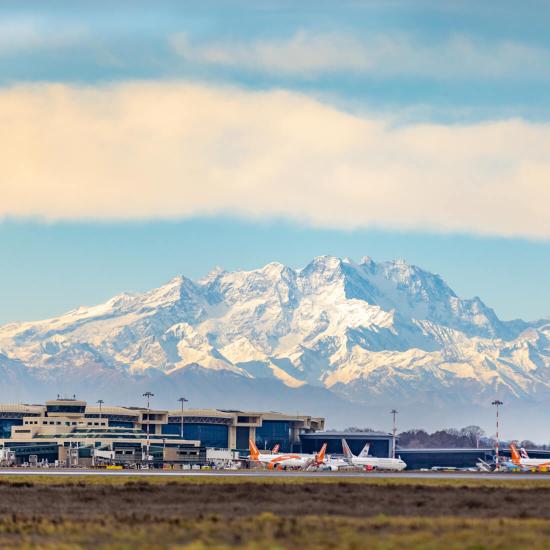
SUSTAINABLE VALUE CREATION MODEL
From listening to shared value
We want our work to have a positive impact. On the basis of ongoing dialogue, we undertake to meet the constantly evolving needs of the local area with solutions that generate shared value in the long term. We are an active part of the community: we keep in touch with the world, by planning sustainable and balanced growth together.
Our Sustainable value creation model
PEOPLE
Individual growth as a resource for all
We never stop. We are always headed towards new destinations. Our work is a continuum of arrivals and departures. We believe that opportunities and talents are best expressed in a dynamic and flexible working environment. So that we can grow together, sharing projects, goals and values. Knowing that the energy of each individual is a resource for all.
Discover our use of remote working at SEA
We build change. We include the future.
New skills, new energy, new horizons. We believe that diversity is a fundamental resource for addressing the global challenges faced by our sector. For this reason, we are pursuing a plan for generational renewal and projects to make the company more and more inclusive.
SEA employees that benefit from remote working (%)
D&I Projects
| Project Name | Area | Targets |
|---|---|---|
| SEA For Equality | Gender equality |
UNI 125:2022 Gender Equality Certification Definition of a cultural evolution roadmap for an inclusive working environment |
| SEA Friendly | LGBTQ+ inclusion | Elimination of prejudices and discrimination against LGBTQ+ people |
| SEA Sprint | Working organization | Definition of “new ways of working” prototypes for better time management |
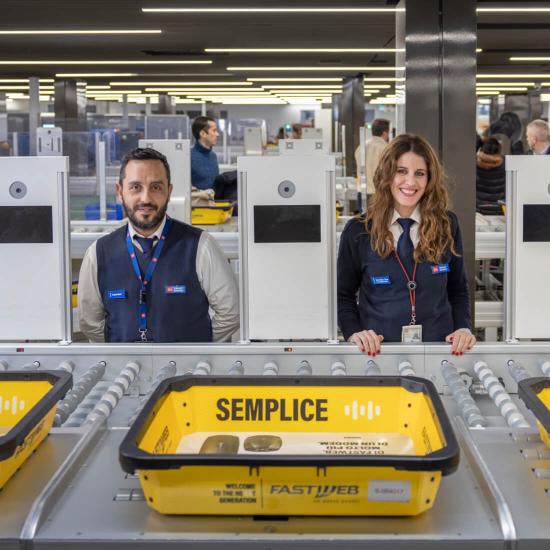
ENVIRONMENT
Net Zero Target: our green transition journey.
We want to lead the transformation of the aviation sector. We aim to achieve the complete decarbonisation of our airports by 2030 and are investing to support the entire aviation industry on the energy transition path through the development of innovative partnerships.
Discover the projects to reduce Scope 1, 2 and 3 CO2 emissions at our airports
Main Decarbonisation Measures at the Milan Airports (2023-2026)
Source: SEA
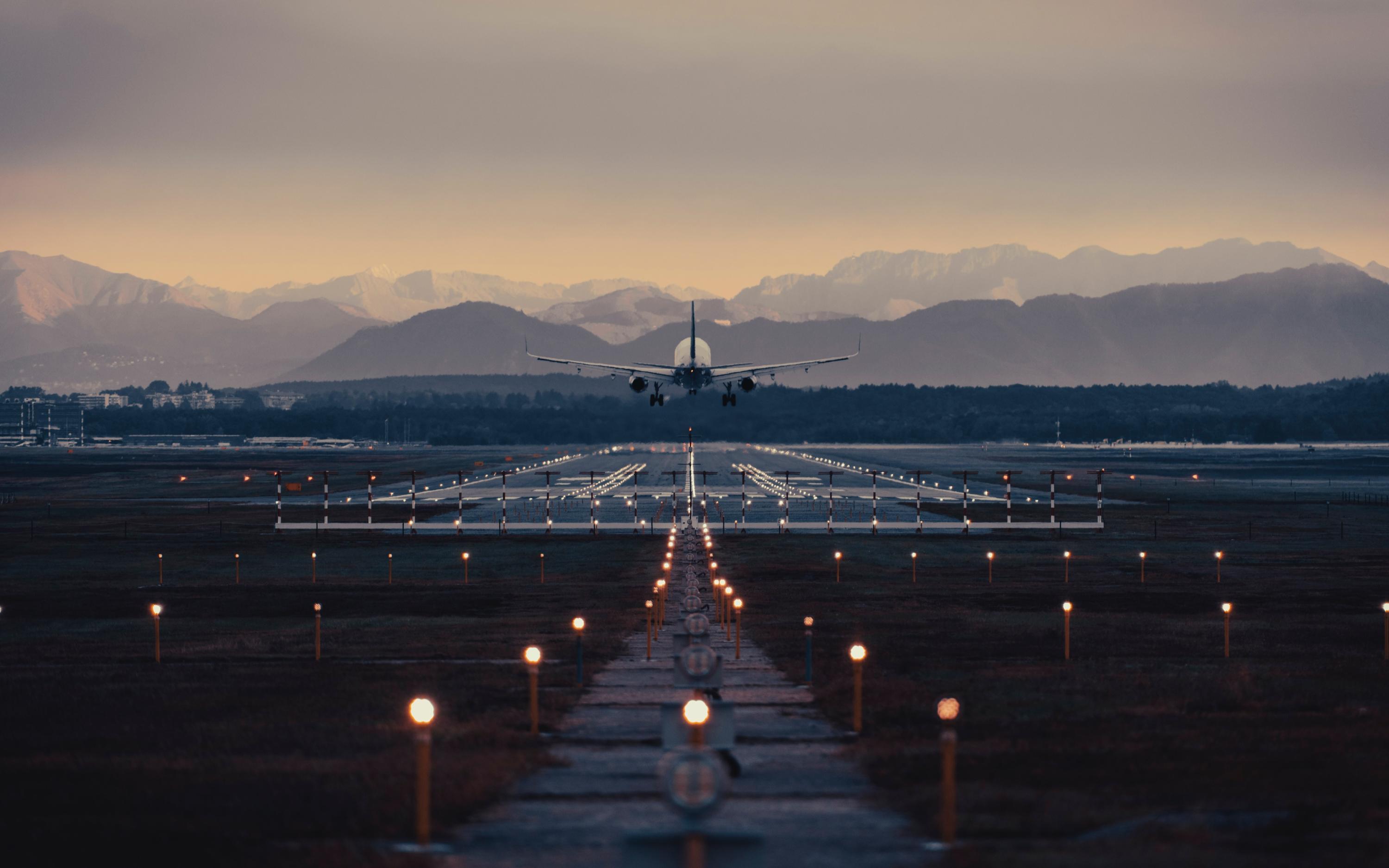
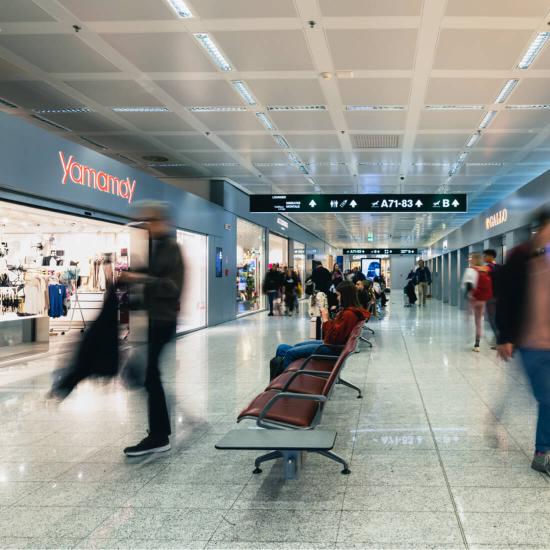
PASSENGERS
Guaranteeing a superior customer experience
With the recovery of air traffic in 2022, our airports recorded very good results in terms of overall passenger satisfaction thanks to ongoing improvements at Malpensa and, above all, appreciation for the new Linate airport.
The renovation of the Linate terminal aimed at creating a better ambiance continues, giving passengers and the city of Milan an airport with a new identity that creates a ‘sense of place’ and reflects the city’s modern, dynamic, design-forward and technological characteristics.
Customer Satisfaction Index 2022 vs. 2019
Source: CFI Group, Doxa
In 2022, both of our airports participated in ACI World Airport Customer Experience Accreditation, an initiative that is part of the international Airport Service Quality (ASQ) benchmarking program and involves the recognition of progressive maturity levels for the management process of all activities related to customer experience and improving service quality.
COMMUNITY & LOCAL CONTEXT
Developing the economy of Northern Italy
Our Malpensa and Linate airports strongly involve the surrounding area, paying attention to the local communities with a view to generating opportunities and shared growth.
In 2022, the SEA airport system recorded a strong increase in direct, indirect, downstream and catalytic impacts compared to 2021, driving a significant trend reversal after the years of the pandemic. The overall effect on the Lombardy region can be quantified at € 40.3 billion, corresponding to the activation of more than 239,000 jobs.
Discover the socio-economic impact generated by our airports
Cumulative social-economic impact of Malpensa 2022
| Type of impact | Jobs effect | Value of production (Euro mil.) |
|---|---|---|
| Direct | 18,005 | 5,1951 |
| Indirect | 11,079 | 1,848 |
| Spin-off | 8,385 | 2,437 |
| Catalytic | 158,217 | 25,234 |
| of which International trade | 75,169 | 19,991 |
| of which Tourism | 73,292 | 4,151 |
| of which Locating businesses | 9,756 | 1,092 |
| Total | 195,686 | 34,714 |
Source: Osservatorio sugli aeroporti milanesi - LIUC BS
Cumulative social-economic impact of Linate 2022
| Type of impact | Jobs effect | Value of production (Euro mil.) |
|---|---|---|
| Direct | 12,369 | 2,516 |
| Indirect | 7,611 | 895 |
| Spin-off | 5,761 | 1,180 |
| Tourism catalytic | 17,603 | 994 |
| Total | 43,344 | 5,585 |
Source: Osservatorio sugli aeroporti milanesi - LIUC BS
